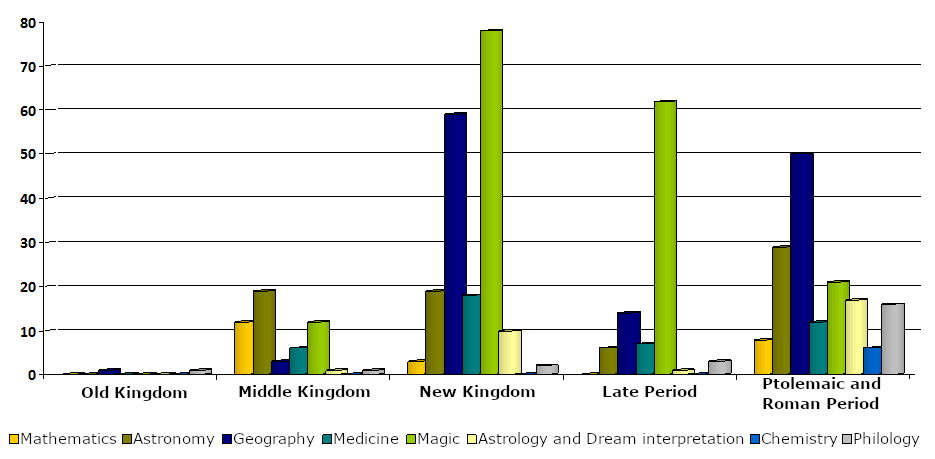Domains of knowledge
While the ancient Egyptian culture has long past away, the universe of Egyptian knowledge has been preserved through written evidence, i.e. textual sources. The structure of the ancient Egyptian vocabulary along specific parameters, such as meaning, word formation, function, social, geographical and chronological framework, etc., offers us access to the knowledge of one of the most formative cultures of the ancient world.
These knowledge based and informational texts can use specific grammar, style and vocabulary. Consequently they might be structured differently from other varieties of language and also could have been exposed to other transformational processes. Technical languages and terminologies are usually very precise and provide insights into how language is actively transformed by its users and also indicates what has been perceived as unclear and vague. Changes within a technical language therefore indicate changes within the discipline of knowledge.

Fig. 1: The chronological distribution of ancient Egyptian knowledge texts
The term “knowledge text” here describes ancient Egyptian textual evidence that corresponds to current scientific publications, although one has to take into account that ancient scientific disciplines neither share the same definitions nor the same methods with contemporary science. In fact they might not even been classified as science from a modern point of view, rather as e.g. magic, prophecy and divination.
The selected domains of knowledge include texts on ancient Egyptian medicine, corresponding to both medical and magical treatments, as well as manuscripts dealing with mathematical, astronomical and astrological issues. Furthermore, onomastics list “all things between heaven and earth” that owe their existence to divine creation. In formal terms, the textual sources consist of treatises and compendia collecting empirically based knowledge, as well as of practical applications like, for example, horoscopes and amulets. The corpus of these texts covers a period from the beginning of the second millennium BC to the eleventh century AD.
